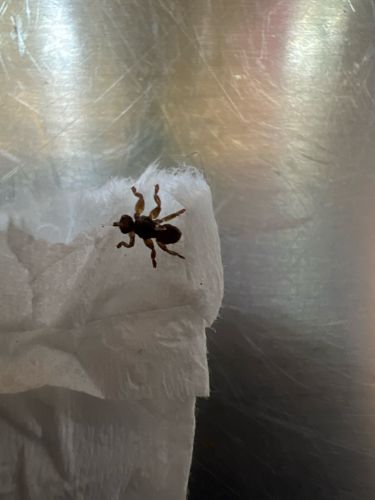Velvet Ant (likely Dasymutilla occidentalis, the Eastern Velvet Ant or Cow Killer)
Scientific Name: Dasymutilla spp. (likely Dasymutilla occidentalis, given the common dark color and robust appearance, though precise identification requires closer examination)
Order & Family: Order: Hymenoptera, Family: Mutillidae
Size: Females typically range from 0.5 to 1 inch (1.3-2.5 cm) in length. Males can be slightly larger or smaller depending on the species.

Natural Habitat
Velvet ants are typically found in sandy areas, grasslands, meadows, open fields, and along the edges of forests where their host insects are present. They can also be found in suburban gardens and lawns.
Diet & Feeding
Adult velvet ants primarily feed on nectar from flowers. The larvae are external parasites of the pupae of ground-nesting bees (like bumble bees and solitary bees) and other wasps.
Behavior Patterns
Velvet ants are solitary wasps, not true ants, despite their common name. Females are wingless and mimic ants, while males are winged. They are most active during the day, especially in hot weather. When threatened, females can produce a squeaking sound and deliver a very painful sting. They do not sting readily unless provoked, and their bright coloration is a warning to predators.
Risks & Benefits
Potential Risks: The primary risk is their extremely painful sting, especially from females. While not usually medically dangerous unless a person has an allergic reaction, the pain is intense and can last for several minutes to hours. They are generally not aggressive but will sting if handled or stepped on. Potential Benefits: As predators of other ground-nesting insects in their larval stage, they can help regulate populations of some bee and wasp species. As adults, they act as pollinators by feeding on nectar.
Identified on: 8/13/2025